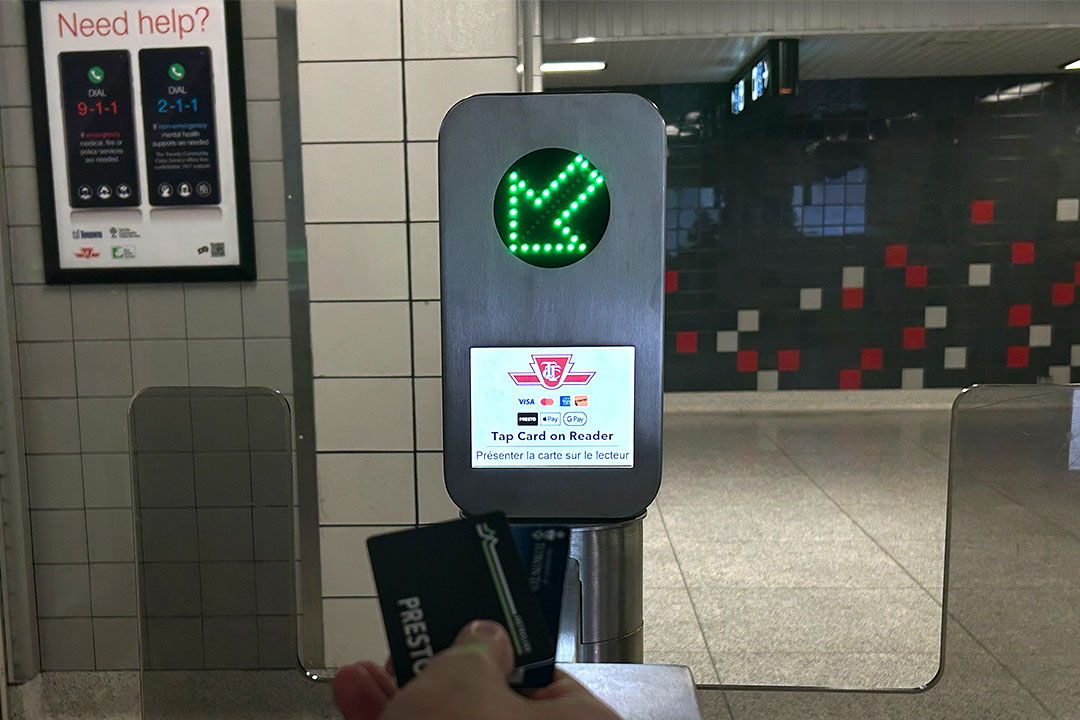In the past few months, the TTC has introduced multiple changes, including adding new payment methods for transit users and closing Line 3 Scarborough Rapid Transit. In a 2015 survey, 63 per cent of respondents attending GTA universities indicated that they use public transit to get to school — suggesting that transit changes dramatically impact the university.
For the U of T students who rely on the TTC and other public transportation services to get to class, work, or other activities, staying updated on transit developments remains essential. The Varsity compiled a comprehensive guide to navigating the existing and new TTC policies that are relevant to students.
The basics: Student discounts
When paying for a single fare using a PRESTO card, the TTC charges students 20 years of age and older $3.35 — its general adult price. Postsecondary students in Toronto can access a reduced fare of $3.25 if they pay their fare in cash.
Students 19 years old and younger can pay a reduced fare of $2.25 when using PRESTO and $2.30 when paying in cash. PRESTO cards pay adult fares as default, so people between the ages of 13 and 19 must alter their cards at a Shoppers Drug Mart location or the TTC Customer Service Centre located above Davisville Station to get the discount. Students need a PRESTO card and valid government-issued identification to be eligible for the discount.
The TTC provides a PRESTO discounted monthly pass — which gives the user unlimited rides for one month — to all postsecondary students, which costs the same as the pass for youth ages 13 to 19. Getting the pass requires students to obtain a TTC postsecondary student photo ID at Bathurst Station. Once they’ve obtained their photo ID card, they can go to any Shoppers or TTC Customer Service Centre to set their PRESTO card for the discounted monthly pass.
Tap of a card
On August 15, the TTC rolled out new payment methods. Now riders can use their debit card, credit card, or a mobile wallet on their phone or smartwatch to pay the fares for any TTC or GO Transit vehicle, including for all buses, streetcars, Wheel-Trans vehicles, and at all subway stations and GO stations.
Fares paid using credit or debit will cost $3.30 for riders 20 years or older — slightly less than the standard adult fare. The TTC advises users to make sure they tap with the same card each time they transfer vehicles on the same trip, otherwise they will be charged a new fare.
Cell service debates
In 2012, the city paid the Australian company BAI Communications to build and operate a cellular network for the TTC. Only Freedom mobile struck a deal allowing its customers to use the network, leaving customers on other carriers without the ability to use the network besides making 911 calls.
At a news conference on September 11, François-Philippe Champagne — federal minister of innovation, science, and industry — announced that the government would force all cell phone service carriers to provide coverage in the Toronto subway system, with subway passengers slated to gain service starting October 3.
Bell and Telus have argued in favour of cooperatively constructing a 5G network for the subway instead of requiring carriers to pay to access the current network. In August, Rogers Communications began providing 5G wireless service on the portion of Line 1 that is along or south of Bloor St., and on Line 2 between the St. George Station and Bloor-Yonge Station.
The end of Line 3
On August 24, the TTC announced that it will permanently shut down Line 3, or the Scarborough Rapid Transit line. The TTC originally scheduled the Line 3 shutdown for November 18 but decided to close the line earlier after a July 24 derailment on Line 3.
On September 3, the TTC announced that it will implement 903 Kennedy-Scarborough Centre Express buses in place of Line 3. Buses will operate southbound from Midland Avenue and northbound from Kennedy Road between Scarborough Centre and Kennedy stations.
The Express Bus Replacement Service will operate using temporary bus-priority lanes. On Kennedy Road and Midland Avenue, the TTC plans to enforce bus lanes by creating “Bus Only” markings and long-term signage.



No comments to display.